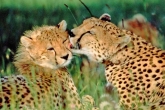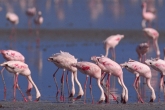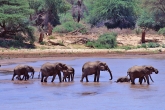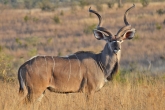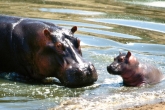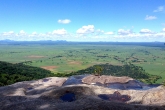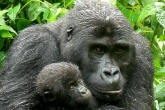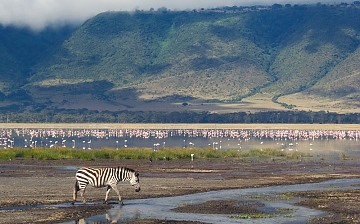Ngorongoro Crater Conservation Area Tanzania 728
The Ngorongoro Crater is a large volcanic caldera which plays host to an advanced ecosystem perfect for the inhabiting and preservation of a wide variety of animals, from the aptly named king of the jungle, the lion, to the ever so rarer horned beast, the rhino.
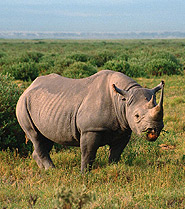
Rhino in the Ngorongoro Crater
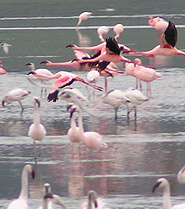
Flamingos

The Olduvai gorge
The Ngorongoro Crater really is an amazing place to visit and to witness its vast landscape from heights that stretch so wide that your eyes can barely take it all in. The bottom of the crater, or the crater floor as it is sometimes referred to is actually the remains of a collapsed volcanic caldera, which occurred between 2 and 3 million years ago. The walls surrounding the crater floor are around 2,000 feet high, and serve as the perfect way to preserve the wildlife inside.
Some of the wildlife you can expect to see at the Ngorongoro Crater can include the 'big five', consisting of rhino, elephant, buffalo, lion and leopard. It is also a great place to see opportunity hunting by the likes of hyenas, as they hang around the large watering hole, planning an attack on an unsuspecting flamingo. The crater also serves as a great location for bird spotters, with many different types inhabiting the park, namely the kori bustard and the black kite, which exist in larger populations here as compared to other parks within the North of Tanzania.
Not only is it the wildlife and scenery which attracts many tourists to the crater each year, there is also a strong interest of the fossils that have been found in Olduvai Gorge, which remains to be one of the most vital prehistoric landmarks on this earth today, with archaeologists estimating some fossilised remains of hominid species being over 3 million years old.
If you are planning a Tanzania safari of the Northern circuit, then this park is a must-add to your itinerary! I would even go as far as to say that I'd happily choose a visit to the Ngorongoro Crater over the most famous park in the world, the Serengeti, any day.
Article Source: https://EzineArticles.com/?expert=Tom_V_Powell
Safaris
6 Days Tanzania Camping Safari
1 - 4 Days Short Safaris
7 Days Samburu, Aberdares, Lake Nakuru and Maasai Mara
6 Days Safari to Amboseli, Lake nakury and Maasai Mara Reserves
5 Days - Manyara, Ngorongoro and Serengeti National Park
10 Days Kenya, Sambura, Mt. Kenya, Lake Nakuru, Masaai Mara and Amboseli
14 Days Tanzania Classic Safari
4 Days Masaai Mara and Lake Nakuru Safari
12 Days Mountain Gorrilas Trakings
8 Days Uganda and Rwanda Gorilla Tracking

 German
German Spanish
Spanish






